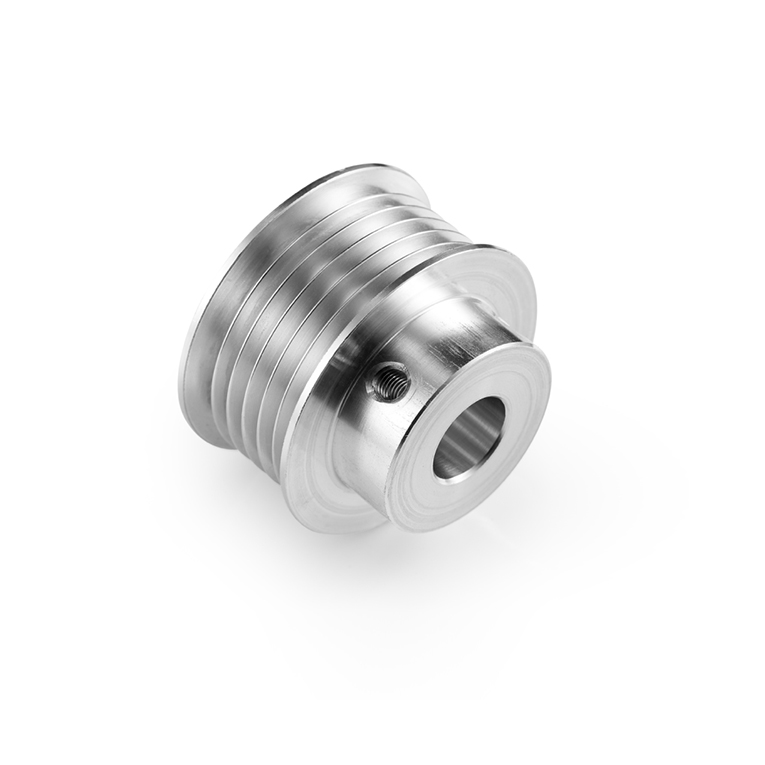
Thin-walled workpieces are commonly encountered in various industries, including aerospace, automotive, and electronics. These delicate components are highly susceptible to deformation during manufacturing processes, which can compromise their structural integrity and functionality. Therefore, it is crucial to employ effective methods and techniques to prevent and reduce deformation in thin-walled workpieces. In this comprehensive guide, we will explore a range of strategies and approaches to address this critical issue.
1. Material Selection
The choice of material is a fundamental factor in preventing deformation in thin-walled workpieces. Opt for materials with high stiffness and low thermal expansion coefficients. Commonly used materials for thin-walled applications include aluminum, steel, and titanium due to their favorable mechanical properties. Material selection should take into account the specific requirements of the application and the potential effects of environmental factors.
1. Proper Fixturing and Clamping
Proper fixturing and clamping are essential to immobilize thin-walled workpieces during machining operations. Inadequate support can lead to vibration and flexing, resulting in deformation. To mitigate this risk, custom fixtures designed to distribute clamping forces evenly across the workpiece can help minimize distortion. Additionally, consider using soft jaws or specialized clamping methods that exert gentle, uniform pressure on the workpiece.
1. Rigidity of Machine Tools
The rigidity and stability of the machine tools used for processing thin-walled components are critical factors in preventing deformation. Vibrations and deflections within the machining setup can introduce unwanted distortions. To address this, ensure that the machine tools are well-maintained, calibrated, and properly aligned. Periodic checks and maintenance routines should be implemented to maintain their rigidity and accuracy.
1. Reduced Cutting Forces
Minimizing cutting forces is vital for preventing deformation in thin-walled workpieces. High cutting forces can induce stress and strain, leading to distortion. To achieve this, consider the following approaches:
a. Optimize Cutting Parameters: Adjust cutting speed, feed rate, and depth of cut to reduce the forces applied during machining. This optimization helps strike a balance between efficient material removal and minimized deformation.
b. Use Sharp Tools: Dull or worn cutting tools require higher forces to cut, increasing the risk of deformation. Regularly inspect and replace tools to ensure they are sharp and in optimal condition.
c. Implement Advanced Tooling: Explore the use of specialized tooling, such as low- or ultra-low helix angle end mills or vibration-dampening tool holders, designed to reduce cutting forces and vibrations.
1. Minimize Heat Generation
Excessive heat generation during machining can contribute to deformation in thin-walled workpieces. High temperatures can cause thermal expansion, leading to warping and dimensional inaccuracies. To minimize heat-related deformation:
a. Use Coolant and Lubrication: Implement effective coolant and lubrication systems to dissipate heat and reduce friction between the cutting tool and workpiece. This helps maintain a more stable machining temperature.
b. Intermittent Machining: Consider implementing intermittent machining strategies that allow the workpiece to cool between passes. This approach helps prevent the accumulation of heat-induced stresses.
1. Thin-Walled Design Guidelines
Effective design can also play a significant role in preventing deformation. When possible, adhere to thin-walled design guidelines, which include:
a. Ribbing and Reinforcement: Incorporate ribs or reinforcing features strategically within the workpiece design to enhance its stiffness and resistance to deformation.
b. Variable Wall Thickness: Design the workpiece with varying wall thicknesses, thicker in critical areas and thinner in less critical sections, to distribute loads more evenly.
c. Avoid Sharp Corners: Rounded or chamfered corners reduce stress concentrations, making the workpiece less prone to deformation.
1. Consider Pre-Stress Techniques
Pre-stress techniques involve intentionally introducing controlled stresses into the workpiece before machining. These stresses counteract the forces that lead to deformation during machining. Common pre-stress techniques include:
a. Pre-Bending: This method involves bending the workpiece slightly in the opposite direction of expected deformation before machining. Once released, the workpiece returns to its intended shape after machining.
b. Hydraulic Clamping: Some workholding systems incorporate hydraulic clamping that applies controlled, uniform pressure to the workpiece to counteract machining forces.
1. Simulation and Modeling
Utilize computer-aided design (CAD) and finite element analysis (FEA) software to simulate and model the machining process. These tools can predict potential deformation and stress points in thin-walled workpieces, allowing for adjustments to be made in the design or machining strategy to minimize deformation risks.
1. Post-Machining Stress Relief
After machining, consider stress relief processes to minimize residual stresses that may contribute to deformation. Common stress relief methods include:
a. Heat Treatment: Controlled heat treatment processes, such as annealing or stress relieving, can help relax internal stresses in the workpiece.
b. Vibrational Stress Relief: Vibrational stress relief techniques use controlled vibrations to reduce residual stresses in the workpiece.
1. Inspection and Quality Control
Implement rigorous inspection and quality control procedures to identify and address deformation as early as possible. High-precision measurement tools, such as coordinate measuring machines (CMMs), can detect dimensional variations and deformation in thin-walled workpieces. Prompt corrective actions can be taken based on inspection results.
Conclusion
Preventing and reducing deformation in thin-walled workpieces is essential for maintaining product quality, structural integrity, and functionality. A combination of material selection, proper fixturing, machine tool rigidity, optimization of cutting forces and heat generation, design considerations, pre-stress techniques, simulation, post-machining stress relief, and stringent quality control can effectively address this critical issue. By implementing these methods and strategies, manufacturers can produce high-quality thin-walled components with minimal risk of deformation, ensuring the reliability of their products in various industries.

Copyright © 2025 Dongguan Yifeng Metal Co., Ltd. | All Rights Reserved